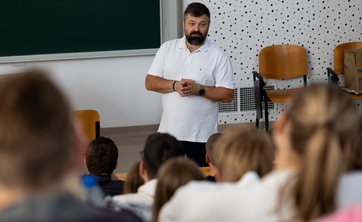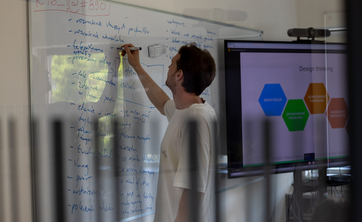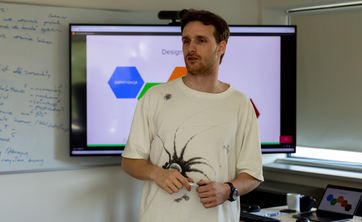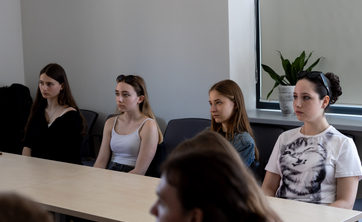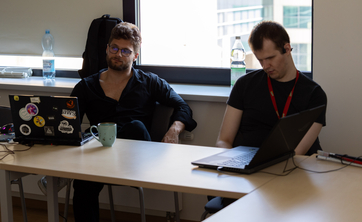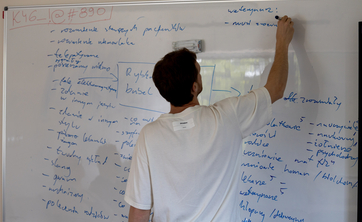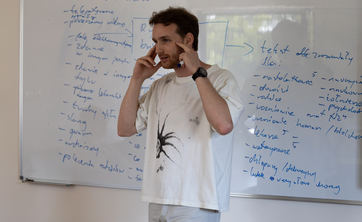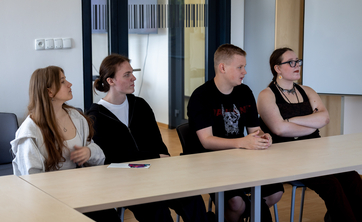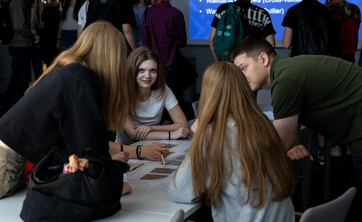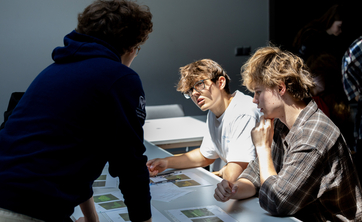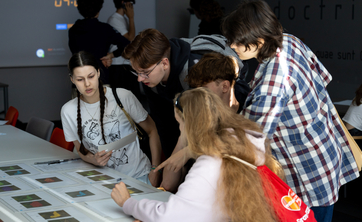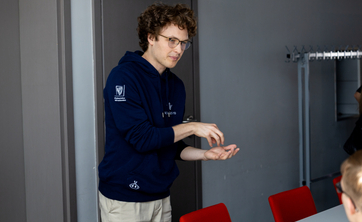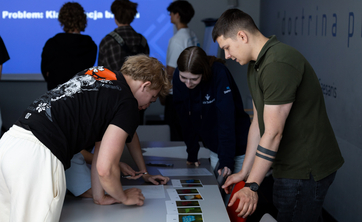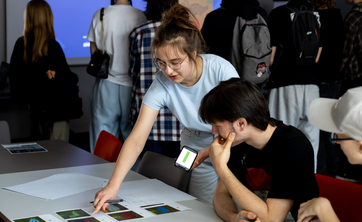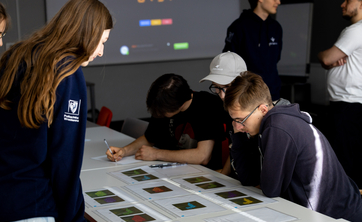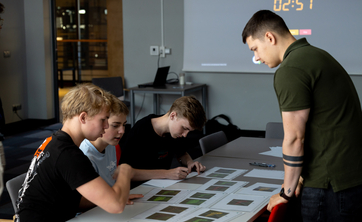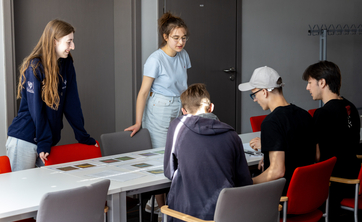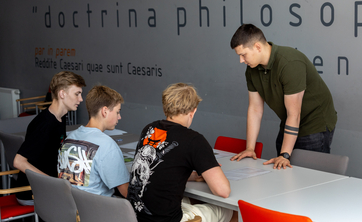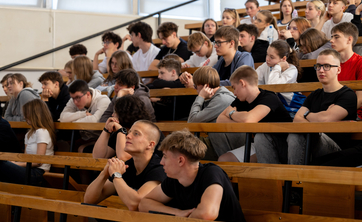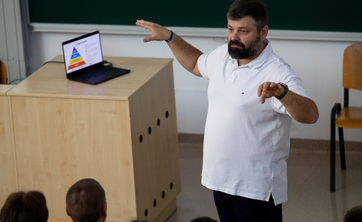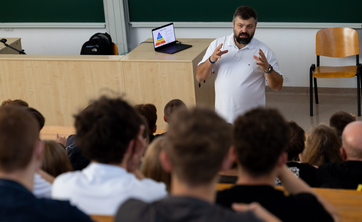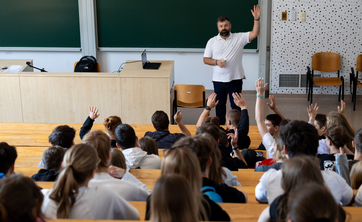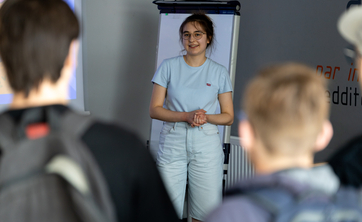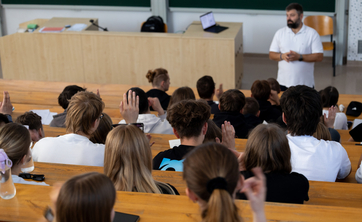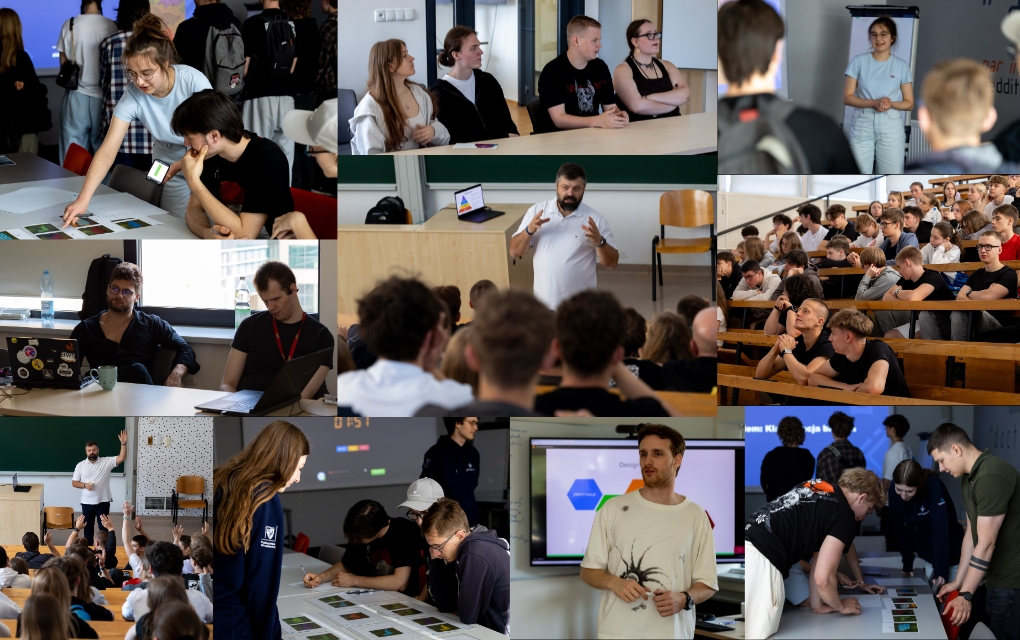
Our university has once again invited high school students to participate in the educational game WUST Challenge. The participants had the opportunity to tackle tasks prepared by lecturers and students, including those from our Faculty. This year, the central theme of the game was artificial intelligence.
During the WUST Challenge 2025, Prof. Tomasz Kajdanowicz from the Department of Artificial Intelligence delivered a lecture titled "Simply AI. Does AI think? How does artificial intelligence work and why it won't (still) replace humans?”
– During the lecture, I explained what artificial intelligence actually is, how a machine "learns," and how it makes decisions – explained Prof. Kajdanowicz.
Our scientist also highlighted the difference between what AI can truly do and what it merely pretends to do. He demonstrated with specific examples why, despite its impressive capabilities, AI still needs humans – and why that's a good thing.
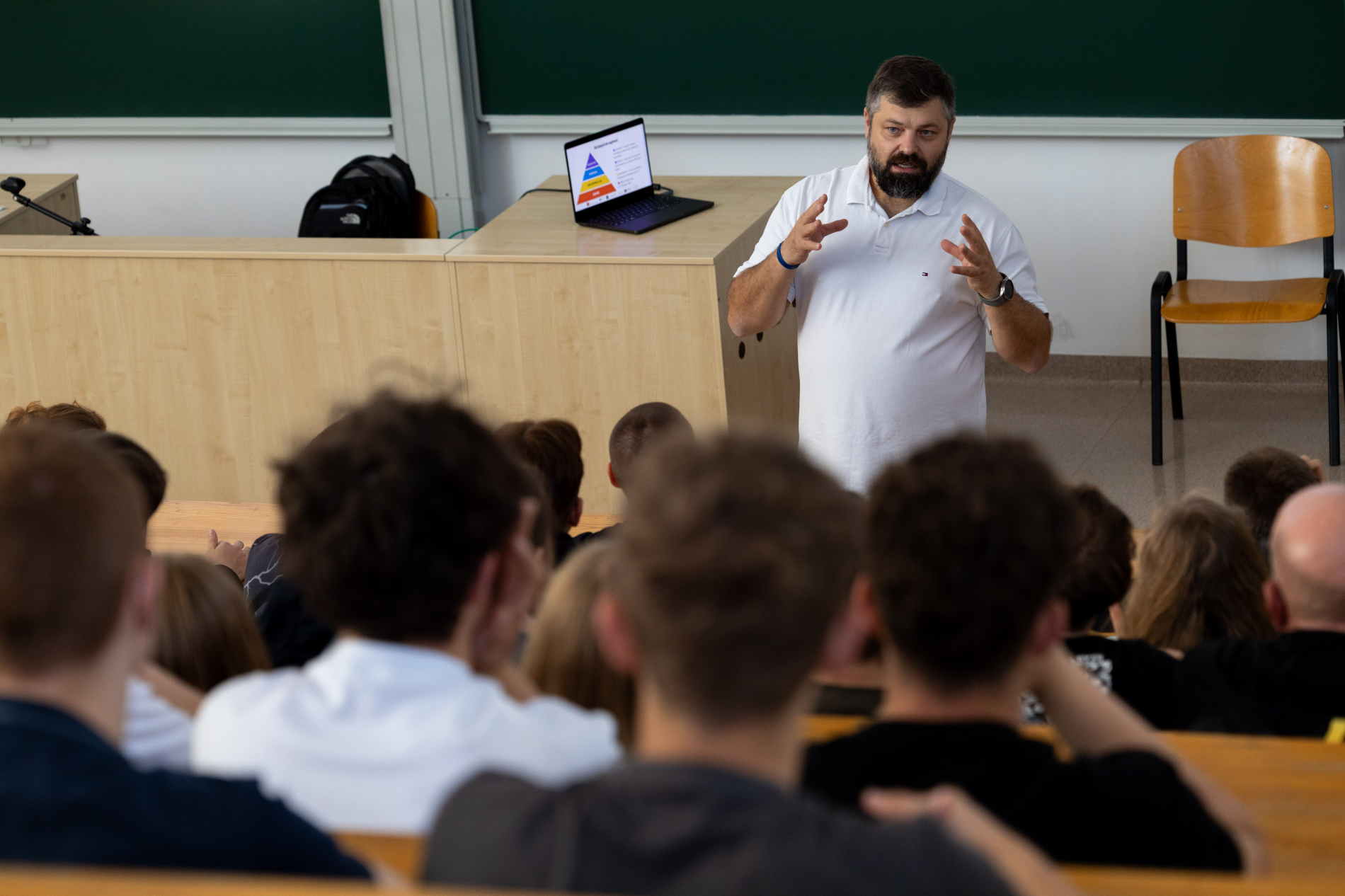 Mateusz Bystroński, Eng. Grzegorz Piotrowski and Eng. Mikołaj Hołysz, also from the Department of Artificial Intelligence, prepared project workshops “Design thinking and prototyping with AI: How to draw inspiration from a text of culture and, using artificial intelligence, design a prototype of a functional tool?”
Mateusz Bystroński, Eng. Grzegorz Piotrowski and Eng. Mikołaj Hołysz, also from the Department of Artificial Intelligence, prepared project workshops “Design thinking and prototyping with AI: How to draw inspiration from a text of culture and, using artificial intelligence, design a prototype of a functional tool?”
Contemporary artificial intelligence tools not only support data analysis and content generation but also enable rapid prototyping of solutions that address the real needs of users.
The aim of the workshop was to harness the potential of AI to creatively transform cultural inspiration into a functional technological concept. The participants began by analysing a text of culture containing a description of a hypothetical, yet potentially useful tool. Their task was to reconstruct its function and operating assumptions.
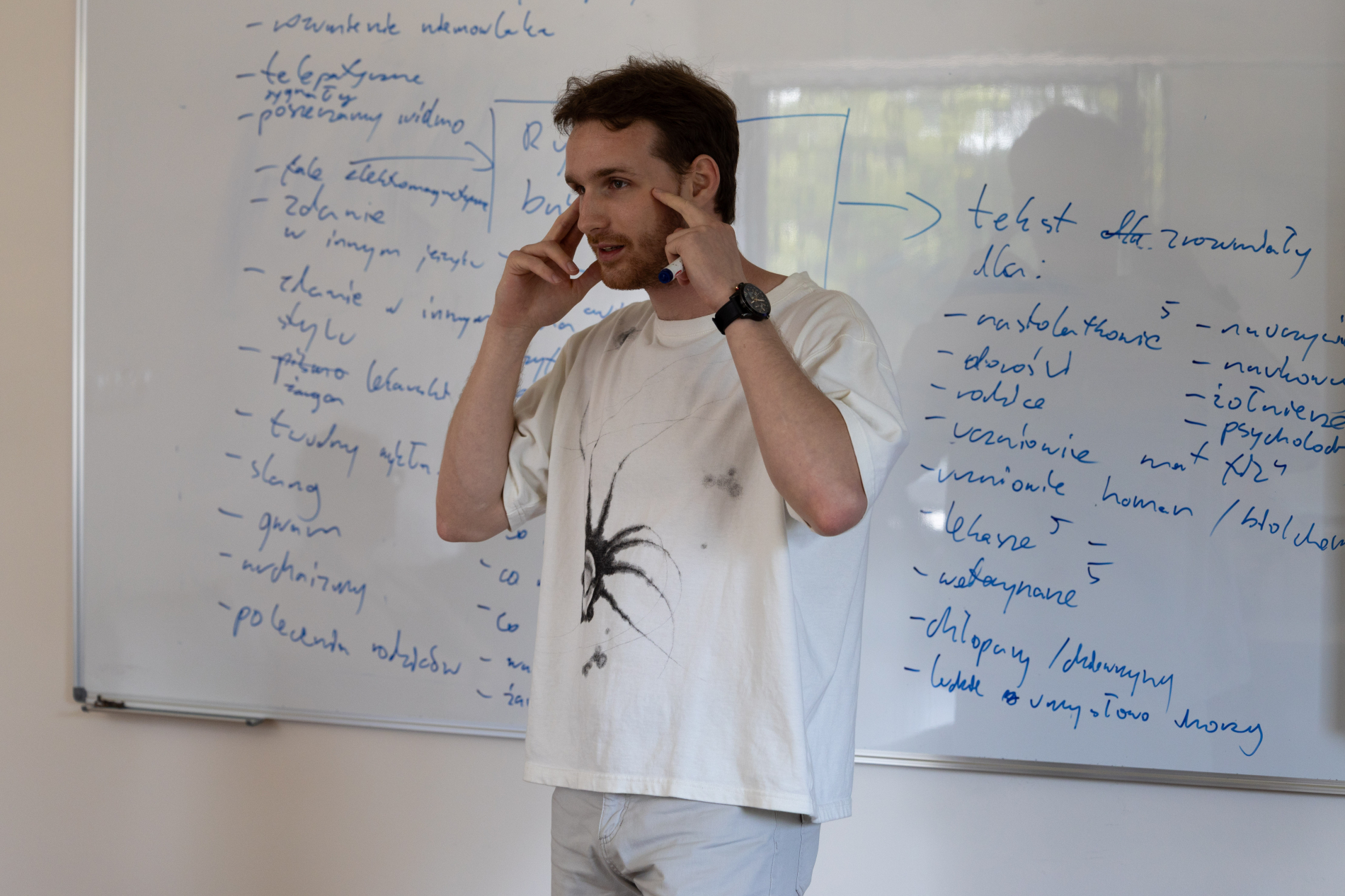 Then, with the support of a large language model (LLM), they proceeded to design a contemporary prototype of this tool. The next stage involved applying the design thinking methodology – participants, based on the previously designed solution, adapted it to a real social, technological, or communication problem. Thus, they have completed the full path: from literary inspiration, through an AI tool, to a functional user concept.
Then, with the support of a large language model (LLM), they proceeded to design a contemporary prototype of this tool. The next stage involved applying the design thinking methodology – participants, based on the previously designed solution, adapted it to a real social, technological, or communication problem. Thus, they have completed the full path: from literary inspiration, through an AI tool, to a functional user concept.
One of the additional workshops at the WUST Challenge was prepared by our Strategic Research Club Solvro. The participants were divided into two groups. They were tasked with creating classification rules based on sample images. They had a few minutes to jointly analyse the data and design a solution – for some of them it might have been the first experience with the practical use of machine learning.
– The task certainly sparked the curiosity of high school students, encouraging them to ask questions, actively participate, and further explore the world of machine learning – emphasises Julia Farganus, a member of the Solvro Research Club.
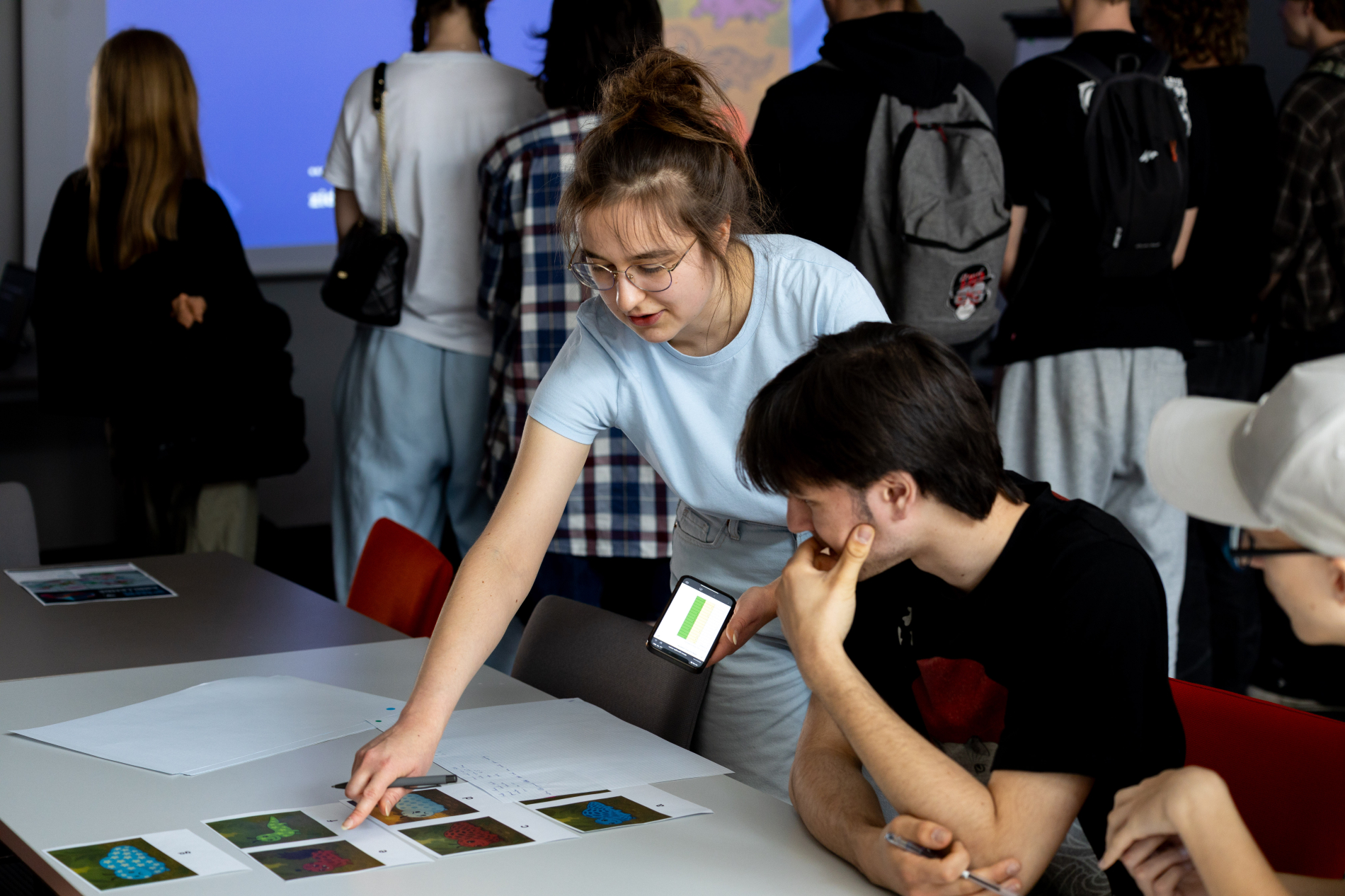 At the end, the groups compared their results with those obtained by ML models trained on the same data. The entire process – from the task idea, through data set preparation, to workshop organisation – was developed by members of the ML section of the Solvro club.
At the end, the groups compared their results with those obtained by ML models trained on the same data. The entire process – from the task idea, through data set preparation, to workshop organisation – was developed by members of the ML section of the Solvro club.
Competition, points, victory!
The WUST Challenge game began with a mandatory briefing, during which the class representatives drew the topic for the lecture and the project workshop. Each class participated in one of four lectures, during which they could earn their first points.
Subsequently, the class selected 8-10 people who went to the design workshop. The workshop topics reflected the development of artificial intelligence in various areas of our lives (in industry, new technologies, medicine, and urban spaces). During the workshop, the participants were required to complete a task worth between 1 and 10 points. At the same time, the other students in the class could earn points by correctly completing additional tasks.
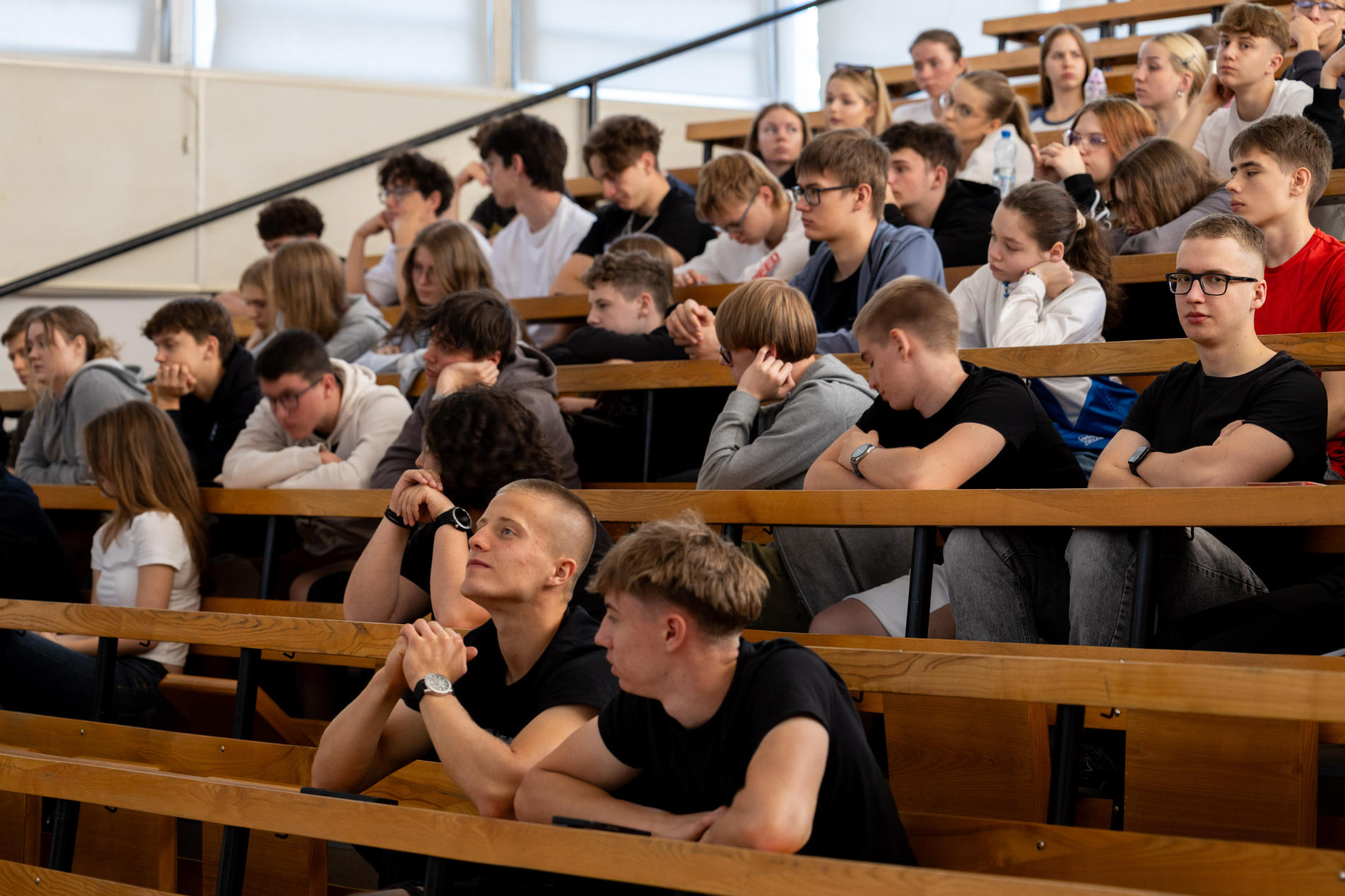
The final result consisted of the total points earned during the lecture, the project workshop, and the additional workshops. The participants could with some attractive vouchers.
The classes with the most points were from:
Juliusz Słowacki High School No. 1 in Oleśnica,
Krzysztof Kamil Baczyński High School No. 7 in Wrocław
and Polish Belgian High School No. 14 in Wrocław.
